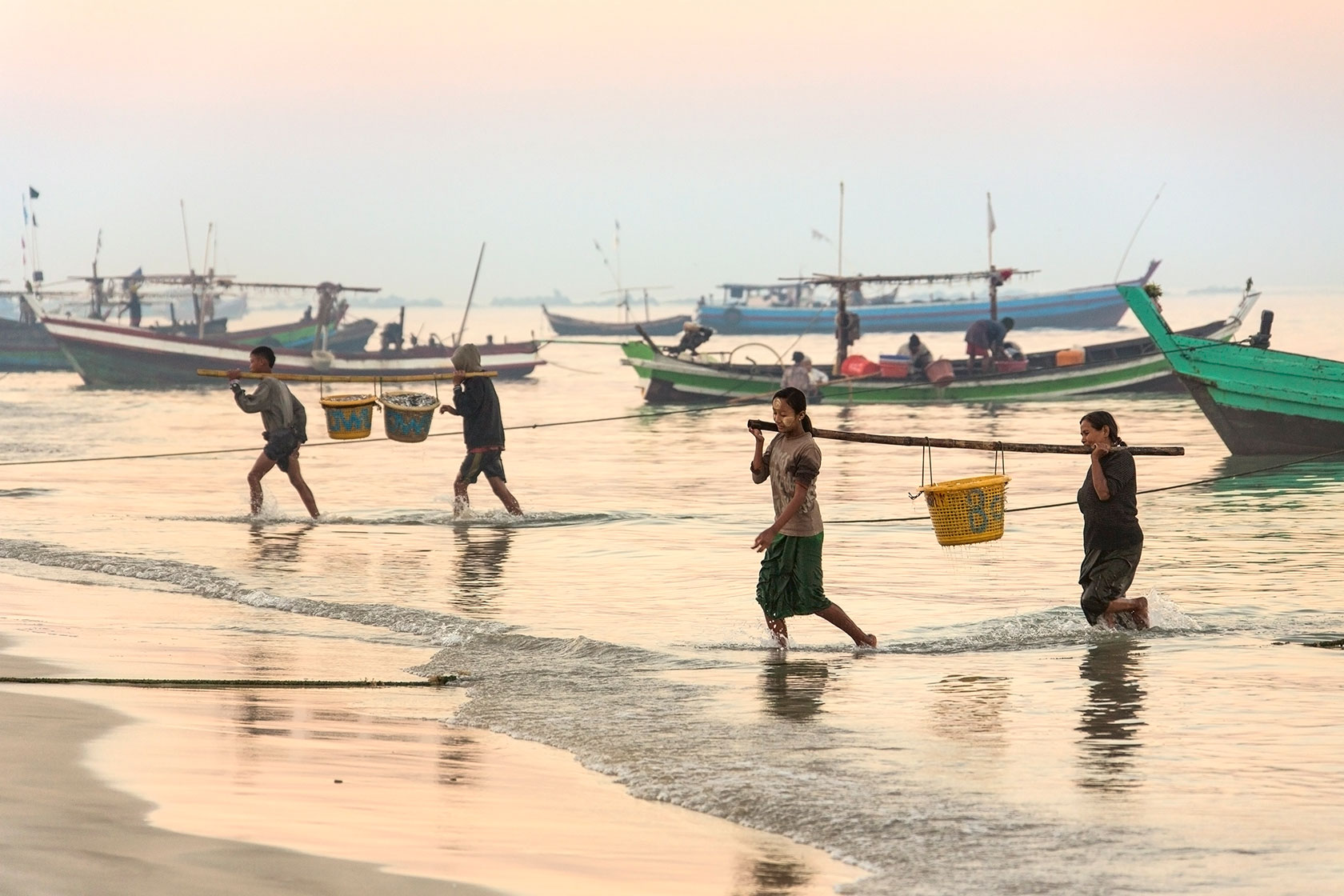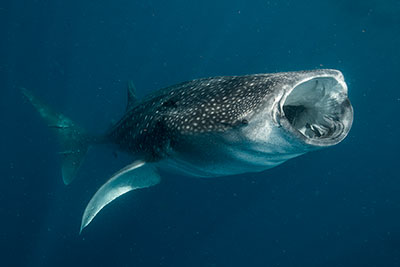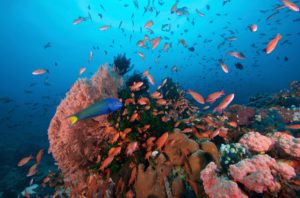“Humanity stands at a crossroads.”
This introduction frames the United Nations’ latest assessment of how countries are progressing toward the 20 biodiversity targets set in 2010 with a 2020 deadline as part of the UN Convention on Biological Diversity. The Global Biodiversity Outlook Five finds that, at a global level, none of the targets have been fully achieved — and warns that the continued decline of biodiversity and degradation of ecosystems will have severe consequences on our future survival.
The report paints a somber picture, but notes there are examples of progress that, if scaled up, could turn things around. This shift cannot occur under a business as usual approach. It requires a bold mix of actions to restore biodiversity, address global climate change, and transform the way we produce, consume, and trade goods and services. However, governments need not go back to the drawing board and can instead lean into and expand options that already show promise of working on a more global scale.
To highlight opportunities for ocean action, Our Shared Seas tapped the expertise of these leaders in the field:
- Juan Manuel Calderon (National Policy Director, Mexico Oceans), Erica Cunningham (Director, Humboldt Current/South American Oceans), and Karly Kelso (Senior Manager, Asia-Pacific Engagement) of Environmental Defense Fund
- Karen Sack (President and CEO) of Ocean Unite
- Jorge Torre (General Director and Co-Founder) and Inés López of Comunidad y Biodiversidad A.C. (COBI)
- Meg Caldwell (Deputy Director, Oceans) of the David and Lucile Packard Foundation

Bringing in the catch at dawn, near Ngapali Beach, Myanmar. Photo: Steve Allen Photo / iStock
Some people might perceive biodiversity as a niche issue or a ‘nice to have’ rather than integral to the well-being and healthy functioning of society and nature. Can you share why biodiversity should be brought into the mainstream and what this looks like?
Meg Caldwell: The biological diversity of our planet – including the ecosystems underpinning that diversity – is completely interconnected and intrinsically linked to our own health and well-being. This reality is foundational for Indigenous cultures and traditional peoples around the world. Nature and people need each other to thrive.
Ocean biodiversity supports our global economy and puts food on the table for billions of people. It is also critical to food security and nutrition, especially in some of the most food-insecure places on earth. Nearly 40 percent of the world’s population depend on marine and coastal resources for their livelihoods. So, we weren’t surprised when a recent survey found that more than 9 in 10 people across the United States, China, Japan, Indonesia, Mexico, and Chile, believe that the condition of the ocean is important to their country’s economy.
Beyond economic and material needs, communities throughout the globe look to the ocean for cultural and social identity, a sense of place and security, and spirituality.
Re-coupling our economic, food, and value systems with nature is not an option. It is the pathway to thriving and more resilient human communities within our lifetimes and for future generations. What does this look like? Search no further than the work of civil society organizations (CSOs) working at the intersection of small-scale fishing communities, ocean health, culture, and gender equity, such as the China Blue Sustainability in South China. Or CSOs, such as Nuiwari, supporting local livelihoods, food security, and intergenerational equity at the watershed level in the state of Nayarit, Mexico.
Re-coupling our economic, food, and value systems with nature is not an option. It is the pathway to thriving and more resilient human communities within our lifetimes and for future generations.
We are hearing a lot about the need for a “holistic” or “integrated” approach to addressing biodiversity loss and the impacts of climate change. Are there basic steps governments can take to start turning things around? Where do we need to start?
Karen Sack: In the coming months, there are some big opportunities for ocean protection that governments can strongly support to give a huge boost to addressing biodiversity loss and the climate crises. Highly protected marine areas that provide safe havens for ocean life are the best tool we have to let nature replenish and bolster its resilience to our fast-changing climate. However, only 2.6 percent of the ocean is highly protected, despite the science telling us that at least 30 percent protection is needed by 2030 to ensure a healthy future. Fortunately, it is possible to turn this low ambition around with a few key steps.

Related article: An Action Agenda to Achieve 30×30: Brian O’Donnell at Campaign for Nature Outlines the First Steps Photo: Amanda Cotton / Coral Reef Image Bank
First , governments are in the final stages of negotiating a new UN agreement that would protect biodiversity in the 60 percent of the ocean that makes up the high seas. Agreeing to a robust agreement that will enable the establishment of networks of marine protected areas in these areas will accelerate progress significantly.
Second , next year, governments will come together to agree to a new 10-year deal for nature at the Convention on Biological Diversity’s 15th Conference of Parties. The ambition of this agreement, including whether it will include the target to strongly protect at least 30 percent of land and sea, will be a huge test to see if the latest results of the Global Biodiversity Outlook have served as a wake-up call to the global community.
Third, governments can make history by agreeing this year to the largest act of ocean protection in history in Antarctica’s Southern Ocean through the adoption of three large-scale marine protected areas in the region.
Finally, it is time to significantly scale-up biodiversity finance. Governments need to remove their support for harmful fisheries subsidies, which amounts to about USD36 billion per year. This is on the table at the World Trade Organization this year. We need to redirect these harmful subsidies into biodiversity conservation, get rid of fuel and other harmful subsidies altogether, take proper account of the true value of nature that the financial system doesn’t recognize, and deploy the billions of dollars in additional financing needed to recover nature.
We need to redirect these harmful subsidies into biodiversity conservation, get rid of fuel and other harmful subsidies altogether, take proper account of the true value of nature that the financial system doesn’t recognize, and deploy the billions of dollars in additional financing needed to recover nature.
Juan Calderon: One of the most important steps governments can take is to help build a framework for climate change mitigation and adaptation that ensures resilient, productive fisheries and prosperous fishing communities. This requires collaborating with governments and multi-national institutions around the world that are laying the foundation for these resiliency frameworks.
Recognizing the importance of regional and international cooperation is critical. Strengthening policies and governmental institutions at international and regional levels, as well as strengthening the bonds between them, entails clearer rules and stronger action-binding policies. International and multi-lateral organizations and efforts – such as the High Level Panel for Sustainable Oceans – are facilitating the search for alternative solutions and making it easier for countries to collaborate. International and regional opportunities for financing reforms should also be considered in any strategy to address climate change.
Jorge Torre: The current pandemic is teaching us that our whole way of thinking needs to change. Governments can start by improving institutional coordination, leveraging technology, and introducing a systemic approach to tackle complex problems. Governments also need a paradigm shift to think beyond the next election and adopt a more long-term vision. Instead of asking, “What can I do during my mandate?”, government officials should ask where we want to be 30 or more years from now.
What successes are you already seeing that could be elevated at a much greater scale? When it comes to marine ecosystems, are there bright spots that suggest we can reverse this crisis?
Meg Caldwell: Less than 20 years ago, the bottom nearly fell out of the commercial fishing industry in the United States due to severe overfishing. Fortunately, both government and industry players recognized the need to change fishing practices, prompting Congress to update the Magnuson-Stevens Act (MSA), the primary law governing marine fisheries management in U.S. federal waters. The law—which requires fishery managers to use science-based tools to prevent overfishing and rebuild overfished populations—has proven to be incredibly successful at rebuilding fish populations and ensuring that healthy populations stay that way. Under the MSA, more than 40 U.S. fish stocks have recovered from the brink of collapse. The MSA isn’t perfect, but it is a bright spot in keeping marine ecosystems strong and shows how science-based fisheries management can support jobs, local communities, and biodiversity recovery.
The Magnuson-Stevens Act isn’t perfect, but it is a bright spot in keeping marine ecosystems strong and shows how science-based fisheries management can support jobs, local communities, and biodiversity recovery.

Fishing boats near Puerto Natales in Patagonia, Chile. Photo: Steve Allen Photo / iStock
Getting things back on track will require the contributions of all sectors and an “all-hands-on-deck” approach. What are opportunities and promising entry points for the marine conservation community—including NGOs, foundations, and practitioners—to help move the needle on this issue?
Karen Sack: The Global Biodiversity Outlook report clearly spotlighted that business as usual will fuel the ruin of our natural world by accelerating global heating, species extinctions, and habitat destruction – and furthering devastating viruses. But we have a choice in defining our planet’s future; it is not predetermined. We need to respect the power of nature, listen to the science, unite behind real transformative positive change, and work together to achieve bold actions. RISE UP – a joint call to action by civil society, fisherfolk, Indigenous peoples, and philanthropic organizations – hopes to do just that. Launched this year, it sets out common priorities, objectives, and targets that organizations collectively agree are vital to tackle the ocean crisis. It is a prescription for ocean health focused on what the ocean needs to recover, not what is politically palatable; and is the kind of “all-hands-on-deck” approach that gives hope that it is possible to make big change for good.
Erica Cunningham: The complexity of problems that face our shared seas can seem insurmountable, particularly with climate change, but solutions do exist. The key is collaboration. A Learning Network approach is a way to tackle these problems through collaborative and participatory processes, where all stakeholders feel empowered to share knowledge and co-create solutions.
The Chilean Small Scale Fisheries Learning Network fosters collaboration across small-scale fishers, government, academia, fishing associations, NGOs, and the private sector. In addition to tackling some of Chile’s largest challenges to achieving sustainable and climate resilient fisheries, the Network supports pilot projects with similar networks in other countries, such as Peru, Cuba, and Spain. For example, in the Juan Fernandez Archipelago, various stakeholders are working together to manage 43 species through a climate-adaptive, ecosystem-based approach. In addition, the Network is fostering various multi-species fishery management plans for Chile’s “forgotten fish,” such as sierra, corvina, and rockfish, that existed in open-access and without any management. This approach of multi-species, resilience-focused fishery management is a first for Chile and a novel approach for ensuring a healthy ocean and improved livelihoods for small-scale fisheries.
Another ecosystem-scale approach to fisheries management from Chile comes from the Humboldt Current, the most variable and productive marine ecosystem on earth. The Chilean government is working in collaboration with Peru and Ecuador to create the region’s first-ever prediction and early warning system for climate impacts on fisheries. This system is currently being designed by top scientists and policymakers in each country and features new technologies that offer a shared ocean observation platform across the Humboldt Current. This system will provide early warning indicators for climate impacts and science-based recommendations for policymakers and enable managers to make “real-time” decisions to improve the way fisheries are adaptively managed in the face of climate change.
The pandemic has shone a spotlight on the connection between people and nature. How can we leverage this heightened awareness that failure to take care of our natural resources, including the ocean, will directly impact our own well-being?
Karen Sack: COVID -19 has shown us that there is no ‘either or’ between planetary health and human health: we must fight for both. To achieve both, we need science and solidarity. Humanity is placing too many pressures on the natural world. Seventy-five percent of all emerging infectious diseases are zoonotic, meaning they originate with animals. Our destruction of biodiversity and habitats creates the conditions for these viruses and diseases to spill over into human populations. For communities and leaders in the eye of the Covid-19 storm, it is hard to think beyond the immediate need to keep safe, but tragedy also has a way of reminding us what matters most: protecting the people and the planet we love.
As leaders begin to think about a post-coronavirus world, we all need to make sure that the opportunity to move forward means prioritizing investments that quickly drive us to a net zero carbon world and ensure that valuing nature is critical to building resilience everywhere. If we take ambitious and urgent action now, we give the ocean its best chance to regenerate and adapt in the long term. We know that marine reserves work. We have the science, the history, and the practice to show it.
Protecting 30 percent of the ocean would generate between USD 490-920 billion by 2050, and create 150,000 to 180,000 full-time jobs right now. That is an opportunity we cannot miss. We also know that there is a huge financing gap for protecting biodiversity. A recent study shows that we need between USD 600 and USD 825 billion each year to stop the decline of biodiversity. That requires investment from the public and private sector and philanthropy. Until now, very little has been invested in blue nature, so we need to act quickly to incorporate the intrinsic value of nature into everything we do and show capital markets and asset managers the risks of not investing in biodiversity protection. Organizations like the new Ocean Risk and Resilience Action Alliance are working with multiple stakeholders to develop innovative finance products to invest in coastal nature. We need to supercharge that work to drive investment into biodiversity.
COVID -19 has shown us that there is no ‘either or’ between planetary health and human health: we must fight for both. To achieve both, we need science and solidarity.
As leaders begin to think about a post-coronavirus world, we all need to make sure that the opportunity to move forward means prioritizing investments that quickly drive us to a net zero carbon world and ensure that valuing nature is critical to building resilience everywhere.
What voices are not currently at the table that, if brought into the conversation, have the greatest opportunity to accelerate progress? What must be done to engage these audiences?

Valparaiso, Chile. Photo: MindStorm-inc / iStock
Meg Caldwell: The latest Global Biodiversity Outlook points to the need to strengthen the integration of gender, the role of Indigenous and local communities, and the level of stakeholder engagement. Policies aimed at protecting and promoting a healthy ocean biodiversity can and must be developed in cooperation with those most effected by their outcomes. Those who live, work on, and steward our coastal waters – especially small-scale fisherfolk – are vital to decisions about how best to govern these waters.
Karley Kelso: Small-scale fishers collectively catch one-third of all the fish around the globe. This harvest provides tens of millions of people with the food they need to survive, the micronutrients they need for basic health, and often an income they rely on for their daily needs. Too often, these voices are drowned out by more powerful ones – or ignored because of their relative lack of agency in the decision-making process.
These voices must be heard because their daily struggle to meet basic needs is actually a global struggle for equity, sustainability, and food security. Consider that by 2050, some 4.5 billion people are expected to rely on fish as a significant source of animal protein. This puts marine biodiversity, the nutrition of 1.4 billion people in coastal communities, and the global food supply at great risk.
Further exacerbating this threat are climate change impacts on ocean health and productivity. This will be especially true in low-latitude developing nations where fisheries are most vulnerable to the impacts of climate change and where people are most dependent on wild-caught fish for nutrition.1 The top 15 global countries with the greatest dependence on fish for protein are developing countries.2 Failure to engage this oft-forgotten segment of the global population will threaten the livelihoods and food security of communities that are most vulnerable to the impacts of climate change and exacerbate a downward spiral of depletion.
We have an opportunity to change that trajectory and lift people up by hearing their voices, recognizing their struggles, and acting on their needs to coordinate solutions that benefit people and nature together. We must acknowledge the contribution of small-scale fisheries toward global food and nutrition security, particularly under the lens of UN Sustainable Development Goal #2: Zero Hunger. By doing so, we can start to reverse the unfortunate trend that ignores food from the sea in the global food security and nutrition dialogue.
Inés López: Women, women, women.
The low number of recognized female roles and contributions is one factor driving the exclusion of women in conservation and fisheries management decision-making processes. It is not only the focus on women and gender equality that is missing, but also a stronger focus on knowledge, vision, fairness, governance gender balance, and creative solutions to addressing marine environmental issues through collective action initiatives. In addition, the tables must include youth, elders, and LGBTTTIQ.
Policies aimed at protecting and promoting a healthy ocean biodiversity can and must be developed in cooperation with those most effected by their outcomes.
Notes
- Golden C, Allison EH, Cheung WWL, Dey MM, Halpern BS, McCauley DJ, Smith M, Vaitla B, Zeller D, Myers SS, et al. “Fall in fish catch threatens human health.” Nature. 2016; 534 (7607): 317–320.
- Bennett, Abigail, Pawan Patil, Kristin Kleisner, Doug Rader, John Virdin, and Xavier Basurto. 2018. “Contribution of Fisheries to Food and Nutrition Security: Current Knowledge, Policy, and Research.” NI Report 18-02. Durham, NC: Duke University, http:// nicholasinstitute.duke.edu/publication.



